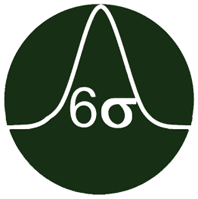Prozess capability Cpk and Ppk

Process capability refers to how well a process or its result (output) matches the requirement (customer request). With the help of the process capability index
- the performance of a process can be clearly described,
- several processes with the same output can be easily compared with each other and
- improvements to processes can be identified.
The process capability index Cp compares the tolerance window specified by the customer with the natural variation of the process (±3σ).
Process capability refers to how well a process or its result (output) matches the requirement (customer request). With the help of the process capability index
- the performance of a process can be clearly described,
- several processes with the same output can be easily compared with each other and
- improvements to processes can be identified.
The process capability index Cp compares the tolerance window specified by the customer with the natural variation of the process (±3σ).

It is valid:

USL = Upper specification limit
LSL = Lower specification limit
s = σ = Standard deviation
We obtain a Cp value = 1 if the tolerance width corresponds to the natural dispersion of the process (±3σ).
Since the Cp value does not take into account that processes are often not centred, the process capability index Cpk applies in these cases. It includes the mean shift in the process under consideration. To calculate the Cpk value, only the worse side of the process is used, where the mean value is closer to the specification limit. This distance is then also only put into relation with half of the natural variation (3σ).
For this:

X = mean value
Parameters of process capability
The different indices were introduced to mark differences between long-term and short-term investigations and to distinguish stable from unstable processes. Only the stability of the process determines whether the calculated characteristic values are to be interpreted as capability or performance.
Cp / Cpk Stable processes = process capability
Pp / Ppk Unstable processes = process performance (performance = power)
Pm / Pmk Machine inspections (machine performance)
The designation has no influence on the numerical value of the parameter. The calculation bases are identical.
One-day Training
Process capability, Cpk and Ppk, normal distribution
Learn more in one day about the topics
- Process capability
- Cpk and Ppk
- Normal distribution
In addition to the theoretical basics, we use concrete examples and practical exercises to convey the direct reference to application in day-to-day business.
Learn more in one day about the topics
- Process capability
- Cpk and Ppk
- Normal distribution
In addition to the theoretical basics, we use concrete examples and practical exercises to convey the direct reference to application in day-to-day business.
Process capability Cpk and Ppk in PDF format
Further training opportunities ...
... can be found in the Education and Training section!
... can be found in the Education and Training section!
...... or simply give us a call or send us an e-mail. We will be happy to help you!
...... or simply give us a call or send us an e-mail. We will be happy to help you!

